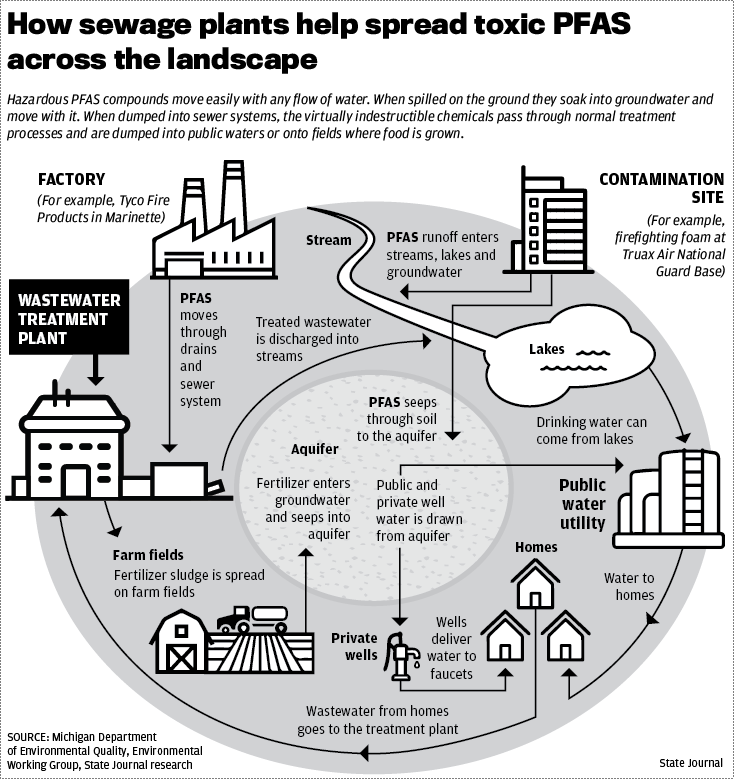More PFAS contamination found in airport runoff
The Wisconsin State Journal | 6 May, 2020 | Chris Hubbuch

“Dane County says it has found additional sources of harmful chemicals in water that drains from the Madison airport and plans to test a new technology for treating the water.
The county said in a news release issued Wednesday afternoon that new test results revealed high concentrations of PFAS in the Dane County Regional Airport stormwater system, including in areas where the fluorinated compounds had not been previously found.
The county did not reveal the extent of the contamination and said the test data would be made available through the Department of Natural Resources’ brownfields cleanup database, although no such data had been posted as of 4 p.m.

According to the release, the county plans to begin testing “a new mitigation technology” at one of the stormwater outfalls, which it says accounts for 59% of the total PFAS contamination.
The release did not specify what type of technology will be used nor when cleanup efforts would begin.
The county did not respond to a request for the report or for additional information about cleanup efforts.
According to the release, both cleanup and investigation have been interrupted by the COVID-19 health crisis, which also forced the cancellation of a public information meeting. The county says it plans to hold an online meeting instead but has not provided a date.
In October, the DNR notified county officials they are responsible for discharging hazardous substances and ordered them to launch an investigation and cleanup plan after test results showed high levels of PFAS in water draining into Starkweather Creek.
Test results of samples collected last spring as part of a stormwater permit renewal process showed concentrations of one compound, PFOS, at more than 55 times the limit set by Michigan, one of the few states to adopt PFAS standards for surface waters.
Subsequent tests have revealed high levels of PFAS in the creek, which empties into Lake Monona.
In January state health officials warned against eating certain fish from Lake Monona after the chemicals were found in fish.
Last month the county agreed to pay more than $6,000 in legal bills as part of a settlement with a group of environmental advocates who sued to get records of county leaders’ communications about PFAS.

PFAS are a group of chemicals found in numerous products, including foam used to fight oil-based fires. Studies have shown two of these compounds, PFOA and PFOS, may increase people’s risk of cancer and affect cholesterol levels, childhood behavior, the immune system and the ability to get pregnant.
There are no federal health standards, but the DNR is working to establish water standards for PFOA and PFOS.
The Department of Health Services has recommended a combined groundwater enforcement standard of 20 parts per trillion for those two compounds but has not issued any guidance on surface water. Michigan has set surface water standards of 11 to 12 ppt for PFOS, the compound most likely to build up in fish.”
Midwest Environmental Justice Organization

